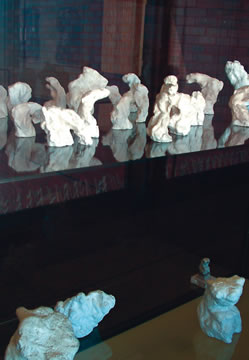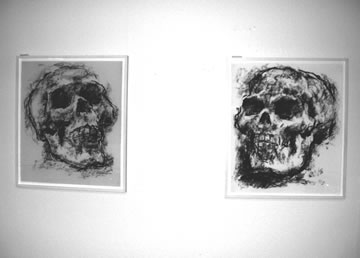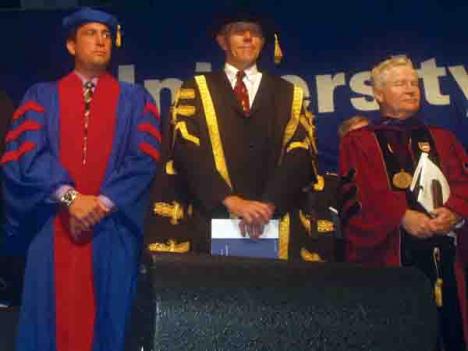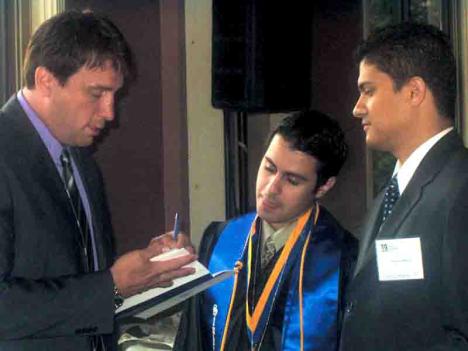The Gods Must Be Crazy

March 6, 2003
Visit the heavens in Healey Library, complete with the gods, recreated by renowned artist William Tucker. Occupying the fifth floor of the library, the exhibit displays include charcoal renderings, pamphlets of past exhibitions from around the world, magazine articles, and several small clay sculptures which, though unlabelled, are characteristic of the skill and thought behind his work.
Sculptor William Tucker, born in Egypt to English parents, has studied both history and art and published a distinguished book on the latter subject, called The Language of Art. He has received awards from the Guggenheim and the National Endowment of Arts Fellowship and currently acts as co-chair in Bard College’s Art Programme. He has displayed numerous works all over Europe and America since 1974.
UMass Boston is already somewhat familiar with Tucker’s work, acting as a home for his Hero At Evening and The Gods. “Hero at Evening” is a concrete enforced glass fiber representation of Simon Bolivar, while The Gods are based upon divine figures in Greek mythology; specifically, Uranus, Rhea, and Cronos. At first glance, these figures bear no resemblance to any sort of traditional sculpture.
I looked at them and wondered just how much UMB had paid to have some lunatic steal congealed concrete from the Big Dig. It was hard for me to stare at the two pieces and not feel irritation for the crudeness that masquerades as art sometimes. Yet, a second, longer, and more discriminating examination was required for me to understand that it was the exact opposite of what I had previously assumed; the works require a more sophisticated eye and mind than most people are capable of offering. It necessitates a thorough review of each and every crevice of the seemingly innocuous blob-like creations to reveal the faces of the characters Tucker has aspired to portray.
However, it was my visit to the Healey Library Gallery that helped me to understand the thought processes behind his work. In the series of framed, unnamed charcoal sketches dotting the walls, he begins by defining a figure before allowing it to degenerate further and further, forcing the imagination of the viewer to work harder to comprehend the duality of a changing form and a static concept.
It is easily seen in the series of scenes depicting a human skull. We begin with the bony planes and osteo-formaic ridges that sharpen and define the first hard lines of the starting sketch; next the harsh angles are softened in successive sketches, making it more and more difficult to derive the root of the original idea, as if the picture had fallen out of focus into a blurry, black-and-white mire. After that, it was simple to understand how a traditional, representational work could morph into an abstract, nonrepresentational figure.
“I see the role of contemporary sculpture,” Tucker wrote in 1998, as preserving and protecting the source of mystery, of the unknown, in public life. Franz Kafka wrote in Prometheus: ‘There remained the inexplicable mass of rock – the myth tried to explain the inexplicable. As it came out of the ground of truth, it had in turn to end in the inexplicable.”’
Some of the work in Healey Library has not been seen by the public and will be available for viewing through April 4. Visit www.artsonthepoint.org or call (617) 287-5347 for more information on this amazing artist.























































